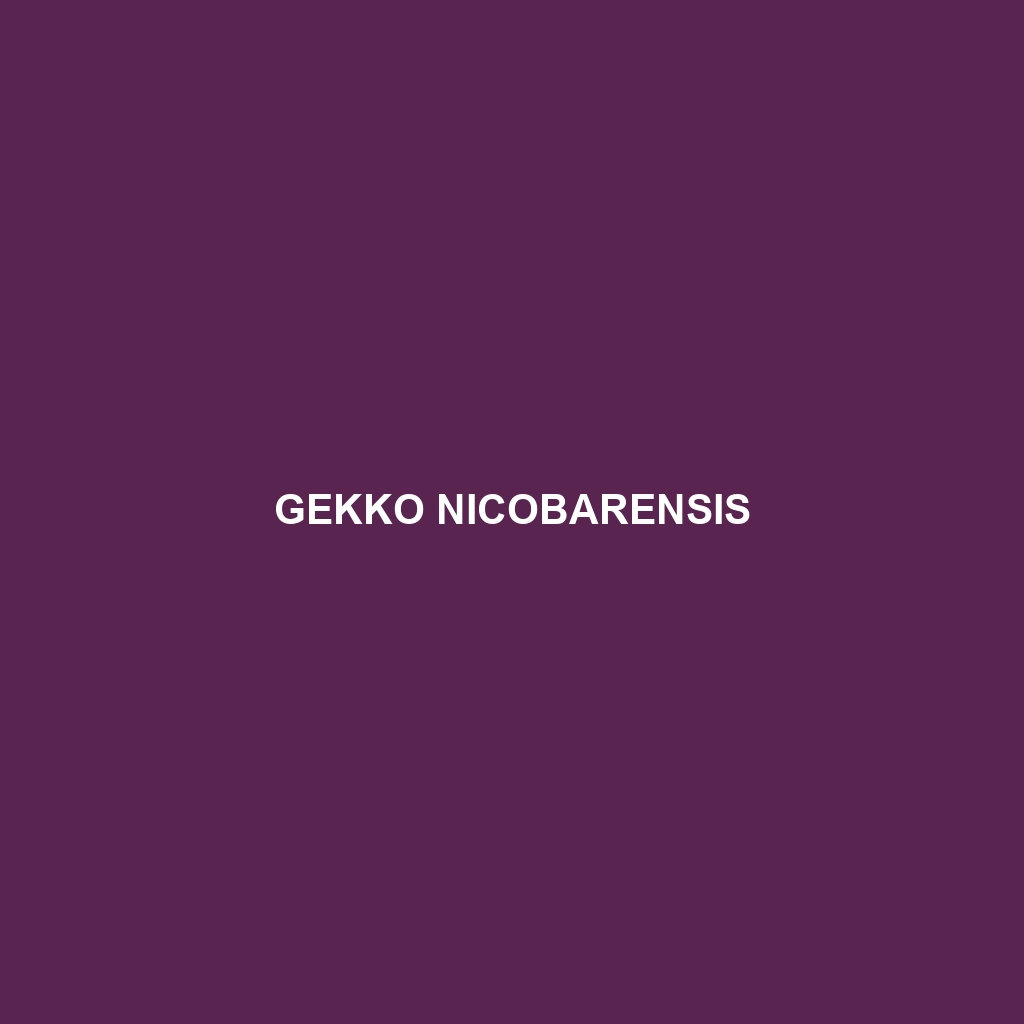Common Name
Gekko nicobarensis
Scientific Name
Gekko nicobarensis
Habitat
The Gekko nicobarensis, commonly known as the Nicobar Gekko, primarily inhabits the lush environments of the Nicobar Islands, situated in the eastern Indian Ocean. This species thrives in diverse habitats such as lowland rainforests, coastal mangroves, and even savanna-like surroundings. They favor warm, humid climates, which are characteristic of tropical regions. The presence of ample foliage provides natural cover and foraging opportunities, making these rainforests and mangrove ecosystems ideal for the survival of Gekko nicobarensis.
Physical Characteristics
Gekko nicobarensis exhibits notable physical traits that distinguish it from other gecko species. Typically, this gecko can reach lengths of about 25 to 30 centimeters. Its skin is adorned with a striking pattern of yellow and brown or grey colors, allowing it to blend seamlessly into its environment. One unique feature is its prehensile tail, which assists in climbing and maintaining balance on branches and tree trunks. The toes are equipped with adhesive pads, enabling the gecko to easily traverse vertical surfaces. Their large, expressive eyes enhance their nocturnal vision, making them adept at navigating during night hunts.
Behavior
Gekko nicobarensis is primarily nocturnal, emerging at dusk to hunt and socialize. During the day, these geckos often seek refuge in tree hollows or beneath leaf litter to avoid the heat and predators. Social interactions generally revolve around mating rituals and territorial displays. Males are known to engage in displays of physical prowess, including push-ups and head-bobbing, to attract females and ward off rival males. Interestingly, during the mating season, males may also emit vocalizations to entice potential mates, making their courtship behavior a fascinating aspect of their social life.
Diet
The dietary habits of Gekko nicobarensis can be classified as insectivorous. Predominantly, they feed on a variety of insects, including crickets, moths, and beetles, which are abundant in their tropical habitat. Their keen night vision aids them in spotting prey in low light conditions. Occasionally, they may supplement their diet with fruit, which classifies them as omnivores. This diverse diet plays a crucial role in maintaining the ecological balance in their habitats, as it helps regulate insect populations.
Reproduction
The reproductive cycle of Gekko nicobarensis typically occurs during the warmer months, which aids in the growth of their offspring. Following mating, the female lays two eggs in hidden locations, such as crevices or under leaf litter, to provide protection against predators. The eggs have an incubation period of approximately 50 to 60 days, after which hatchlings emerge fully formed. Parental care is minimal; however, females often choose nesting sites that maximize the chances of survival for their young. Observations suggest that juvenile geckos exhibit rapid growth as they adapt to their environment in search of food and shelter.
Conservation Status
The conservation status of Gekko nicobarensis is currently categorized as ‘Least Concern’ by the International Union for Conservation of Nature (IUCN). Despite this, habitat destruction due to deforestation and human encroachment poses significant threats to their population. Conservation efforts are underway in the Nicobar Islands to safeguard the unique ecosystems essential for the survival of this species. Initiatives include habitat protection, reforestation projects, and the management of human practices that impact their natural habitats.
Interesting Facts
One captivating aspect of Gekko nicobarensis is its ability to change skin color in response to its surroundings, similar to what many amphibians do. This adaptation is believed to provide additional camouflage from predators. Additionally, these geckos possess a unique vocalization that differs from many other gecko species, which has been a point of interest for researchers studying their behavior and communication methods.
Role in Ecosystem
Gekko nicobarensis plays a vital ecological role in its habitat as both predator and prey. As an insectivore, it helps to control insect populations, thereby maintaining a balanced ecosystem. Additionally, their presence supports the health of the fungal and plant networks through their waste, which acts as a natural fertilizer. These geckos also serve as prey for various birds and larger reptiles, thus forming an important link in the food chain. The Nicobar Gekko is a keystone species that helps to sustain the delicate balance of biodiversity within its rainforest and coastal ecosystems.
